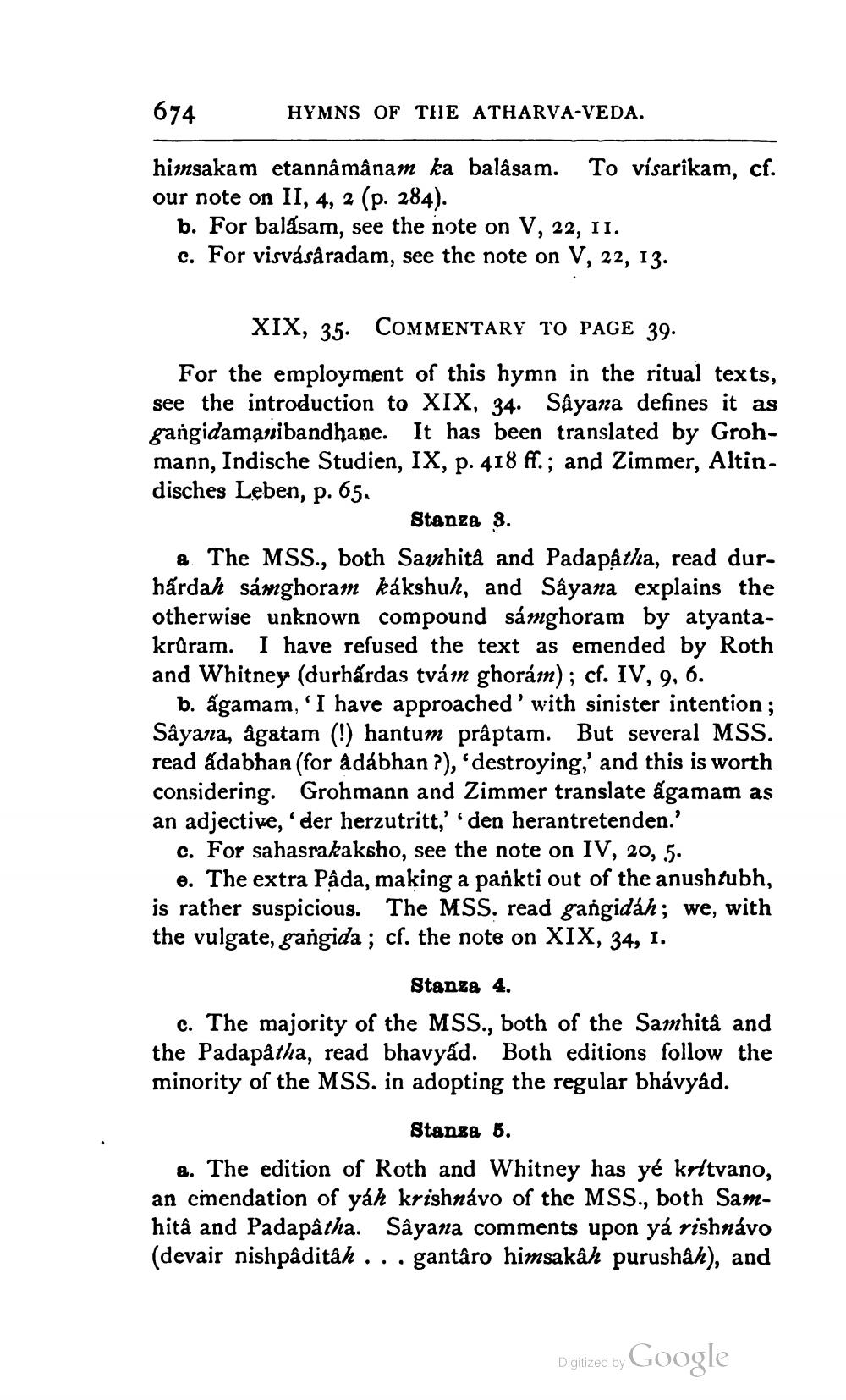________________
674
himsakam etannâmânam ka balâsam. our note on II, 4, 2 (p. 284).
b. For balasam, see the note on V, 22, 11. c. For visvásâradam, see the note on V, 22, 13.
HYMNS OF THE ATHARVA-VEDA.
To vísarîkam, cf.
XIX, 35. COMMENTARY TO PAGE 39.
For the employment of this hymn in the ritual texts, see the introduction to XIX, 34. Sâyana defines it as gangidamanibandhane. It has been translated by Grohmann, Indische Studien, IX, p. 418 ff.; and Zimmer, Altindisches Leben, p. 65.
Stanza 3.
a The MSS., both Samhitâ and Padapâtha, read durhardah sámghoram kákshuk, and Sâyana explains the otherwise unknown compound sámghoram by atyantakrûram. I have refused the text as emended by Roth and Whitney (durhấrdas tvám ghorám); cf. IV, 9, 6.
b. agamam, 'I have approached' with sinister intention; Sâyana, âgatam (!) hantum prâptam. But several MSS. read adabhan (for âdábhan ?), 'destroying,' and this is worth considering. Grohmann and Zimmer translate agamam as an adjective, 'der herzutritt,' 'den herantretenden.'
c. For sahasrakaksho, see the note on IV, 20, 5.
e. The extra Pâda, making a pankti out of the anushiubh, is rather suspicious. The MSS. read gangidáh; we, with the vulgate, gangida; cf. the note on XIX, 34, I.
Stanza 4.
c. The majority of the MSS., both of the Samhitâ and the Padapâtha, read bhavyad. Both editions follow the minority of the MSS. in adopting the regular bhávyâd.
Stanza 5.
a. The edition of Roth and Whitney has yé krítvano, an emendation of yáh krishnávo of the MSS., both Samhitâ and Padapâtha. Sâyana comments upon yá rishnávo (devair nishpâditâh . . . gantâro himsakâh purushâ), and
Digitized by
Google




